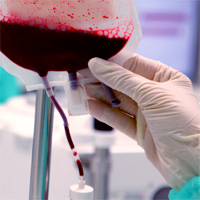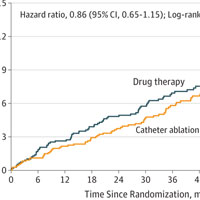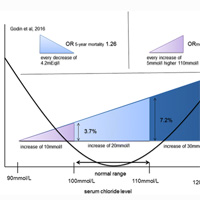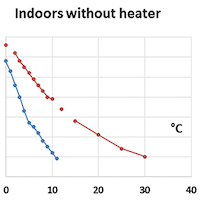
The Role of Central Venous Oxygen Saturation (ScvO2) as an Indicator of Blood Transfusion in the Critically Ill
Transfusion of red blood cells is an everyday practice in critical care with the primary aim of restoring adequate tissue oxygenation. However, blood transfusion may also be harmful and costly, therefore a so called restrictive... read more

Department-Based ICU Improves Patient Survival Rates
A new Michigan Medicine study found that implementing a dedicated emergency medicine department-based intensive care unit improved patient survival rates and lowered inpatient intensive care unit (ICU) admissions. In the... read more

12 Great Summer Reads for Intensivists
From fascinating medical memoirs to horrifying accounts of medical mistreatment in the past two centuries, these books will make you aware of how far medicine has come and how far it has yet to go. Surgeries without anesthesia,... read more

Out-of-Hospital Cardiac Arrest Survivors Need Cardiological and Neurological Rehabilitation
Most survivors of out-of-hospital cardiac arrest (OHCA) suffer from cardiologic symptoms and approximately half of them experience cognitive problems because of hypoxic brain damage. Symptoms of anxiety and depression... read more

Risk Factors Associated with 30-day Mortality for Out-of-Center ECMO Support
Out-of-hospital extracorporeal membrane oxygenation (ECMO) implantation and ECMO transport have become a growing field useful for emergent treatment of heart or lung failure with increasing number of centers launching such... read more

Extubating Ventilated Patients on Vasoactive Infusions is Safe
In a large single centre study, 21% of intubated patients who received infusions of vasoactive infusions while mechanically ventilated were extubated for the first time while still receiving them. Coincident with their earlier... read more

Outcome Assessment in Advanced Practice Nursing
As the role of the nurse continues to expand in today's healthcare environment, APRNs and DNPs are more frequently tasked with quantifying, evaluating, and improving their individual care processes, as well as demonstrating... read more

Effect of Catheter Ablation vs Antiarrhythmic Drug Therapy on Mortality, Stroke, Bleeding, and Cardiac Arrest Among Patients With Atrial Fibrillation
The CABANA Randomized Clinical Trial. In this randomized clinical trial involving 2204 patients with atrial fibrillation, catheter ablation, compared with medical therapy, did not significantly reduce the primary composite... read more

Counterbalancing Work-related Stress? Work Engagement Among Intensive Care Professionals
Work engagement counterbalances work-related stress reactions. The relatively high workload in ICUs, coupled with an especially heavy emotional burden, may be acknowledged as an integral part of ICU work. This workload... read more

Audiobooks As Good As The Old-fashioned Reading
With the rise of new technologies, long gone are the days of cassette tapes and CDs that made stopping, rewinding, learning, and restarting an audio recording an annoyance. Digital media now makes it possible for individuals... read more

Serum Chloride Levels in Critical Illness – The Hidden Story
Chloride is the principal anion of the extracellular fluid and vital for both serum electroneutrality and acid-base homeostasis. The aim of this review is to investigate the relevance of dyschloremia in the critically... read more

Interhospital Transport on Extracorporeal Membrane Oxygenation of Neonates
In recent years the number of extracorporeal membrane oxygenation (ECMO) cases in neonates has been relatively constant. Future expansion lays in new indications for treatment. Regionalization to high-volume ECMO centers... read more
What should we stop doing in the ICU?
Intensive care is an interesting specialty. From all the early excitement in the 1970s, passing through two decades of intensive physiological use at the bedside, intensive care landed on the rough ground of modern randomized... read more

Safety and Efficacy of VBF in Critically Ill, Mechanically Ventilated Adults Using the PERFECT Protocol
Underfeeding in critical illness is common and associated with poor outcomes. According to large prospective hospital studies, volume-based feeding (VBF) safely and effectively improves energy and protein delivery to critically... read more








